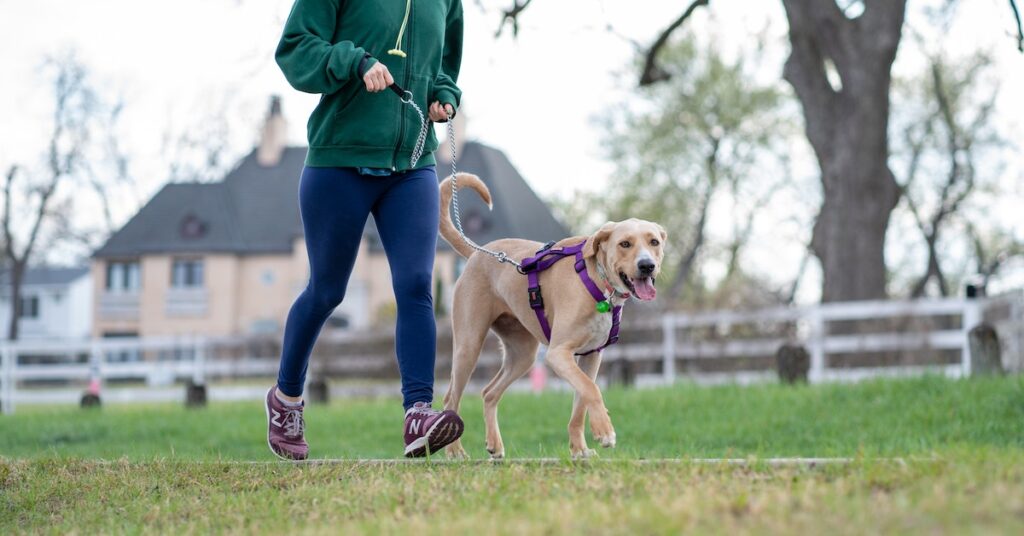If you’re looking for ways to give your pet the exercise it needs to stay healthy, there are plenty of options. You can choose from dog walks and treadmills to swimming and walking. There are even classes for dogs! Find one that interests your dog and find out more about how it can benefit your health! Just make sure it’s safe for both of you!
Dogs
Exercise is essential for dogs and it can be a great way to spend time with your pet. It also helps increase the bonding you have with your dog, and it can improve their health. Some dogs can exercise up to an hour a day, while others need more intense workouts. However, your dog’s ability to exercise depends on their breed, age, and physical condition.
A recent study found that owning a dog was a great way to increase your physical activity. The study involved nearly 2,000 households, and it looked at the habits of people who had dogs and those who did not have them. Each household was asked to fill out a questionnaire about their activities, and a small subset was given an activity monitor to wear for a week while exercising. The scientists then compared the data to see how much the dog owners exercised. The study showed that those who had dogs were more likely to walk than those without dogs.
Playing games with your dog is another way to provide exercise for your dog. Games such as fetch and tug-of-war are fun for both of you, and provide moderate exercise. Games also help your dog develop new tricks, and keep them mentally stimulated. You can also build a dog obstacle course or play with toys to provide your pup with a variety of exercises.
Treadmills
Treadmills can be a great way to give your dog an exercise routine. Many treadmills are adjustable, so your dog can get a different workout every time. There are a few things to look for when choosing a treadmill for your pet. First, look for one with safety features. Many treadmills come with safety keys and tension controls. Another important safety factor is the use of quiet motor technology. This technology prevents overworking a dog, while still giving it the same exercise.
Pets should be allowed to use treadmills in moderation, so start slow. Reward your dog every few steps, and then slowly increase the speed. When your dog has gotten used to the treadmill, it will be easier to start running faster. If your dog isn’t used to it, you may want to use a harness or attach an attachment to keep them secure on the treadmill. Treadmills can be a fun way to get your dog active.
When you first start walking your dog on a treadmill, it is important to remember that every dog is different. Even the same dog will behave differently on different days. This means that it is important to be patient and pay close attention to your pet’s needs and limitations. As with any exercise, it is important to follow the manufacturer’s instructions, so that you don’t end up injuring your dog.
Swimming
Taking your pet swimming can be a great way to get him or her active. But it is important to be sure to follow a few safety guidelines to keep your pet safe. First of all, never push your pet into the water. It is best to wait until your pet is ready to jump in the water. This will help you avoid a mishap or injury.
Aside from being fun for your dog, swimming is also a great form of exercise for both you and your dog. It can provide an excellent aerobic workout for overweight dogs with joint and spine problems. Moreover, the water will take off a lot of pressure from your dog’s joints and muscles, which can help your dog recover from pain or age. Plus, swimming can improve your dog’s bond with you.
Swimming for pets can also be beneficial for dogs with orthopedic problems. It helps strengthen muscles and joints, aid circulation, and reduces the risk of further injury. A well-trained hydrotherapist can help your pet learn to swim with ease. However, it is imperative to make sure that you supervise your dog’s swim sessions. If you are unsure of the safety of swimming for your dog, consult your veterinarian.
It is important to keep in mind that not all dogs are good swimmers. Even if they were bred to swim, they may not enjoy the water. Some breeds were bred specifically for activities that involve water, which makes them good swimmers. For dogs that don’t like water, taking them for swim sessions might be the best way to help them overcome this problem.
Walking
Walking with pets can provide a variety of benefits, including exercise, a connection to nature, and bonding time. Most dog owners report that their walks are enjoyable for them and their dogs, and they are more likely to continue walking when the dog is enjoying it. While the benefits are clear, some dog owners report that they lose motivation when their pets don’t enjoy their walks.
Many cities offer free dog waste bags, which can make walking with your dog more enjoyable. In addition, a University of Western Australia study showed that people who walk their dogs have more interpersonal relationships, which may encourage increased physical activity. This may be because dog owners in dog-walking communities tend to greet strangers on the street, exchange friendly gestures, and participate in neighborhood activities.
When walking with your pet, remember to keep your dog on a leash. You should also wear reflective clothing, so you and your dog will be easily seen at night. You should also carry water and plastic bags. Make sure to check for ticks, and be sure to carry fresh water for your pet. A good place to start is a local park. Then, once you’ve gotten used to it, you may want to walk further or more often.
If you have a dog that likes to walk, consider hiring a dog walker. A dog walking service will ensure that your dog receives the best care while out for walks. The company will also carefully select their staff and provide training in company policies and safety practices.
Agility classes
Agility classes for pets can be a fun way to get your pet active. The sport of agility involves running and jumping, so it is important to make sure your pet is healthy and strong. Your veterinarian can check your dog’s health and give them the green light to begin training. In particular, young puppies should be checked out for their joints, which can be damaged by overstressing them. You should also check with your own veterinarian if your dog has a medical condition that prevents them from participating in agility training.
Agility training helps your dog burn off excess energy and improve his coordination. This athletic challenge also keeps him fit and prevents obesity. Agility courses are also great for your dog’s mind, as they provide mental exercise. Agility classes provide an opportunity for your pet to learn new tricks, too. Your pet will gain confidence and have a lot of fun.
Dogs can begin agility classes when they are 12 to 18 months old. However, puppies should not start before they are completely independent. Besides, if you’re concerned that your dog may get injured while practicing, you should consult a veterinarian before enrolling your pet in agility classes. You should also consult a dog trainer before enrolling your pet in any class.
Agility classes for pets also teach your dog to listen to you. Dogs need a challenge in order to keep their brain healthy. Agility training helps your dog develop a positive self-image, which will carry over into other areas of life. Agility also helps you improve your skills as a dog trainer.
Skating
Skating is a great way for you and your pet to exercise together. However, there are a few things that you need to know before taking your dog for his first skate. First, you must make sure your dog is comfortable skating. It’s best to use a sturdy harness.
When skating, you have to keep your balance. Skating requires a lot of lower body work. To balance out the movements, you have to push off with your legs out to the side. This helps to engage your gluteus maximus, which is a powerful muscle that is used for extension and hip abduction. This exercise will strengthen your entire lower body and improve your posture.
You can take your dog skating if it’s trained well. However, you must be an experienced skater and keep a close eye on your dog. If he gets too excited, he can easily get out of control and harm other people. In addition, it’s a good idea to skate in a location that’s free from distractions, such as cars or pedestrians. You should also ensure that the pavement isn’t too hot for your pet’s paws.
You can also use your skateboard to teach your dog to push. During this time, you should keep treats by your pup’s nose and praise it when it gets on and moves. Once your dog manages to get on the skateboard, you can practice with a skateboard on the carpet or grass. For the first few times, it’s best to keep your dog on the skateboard while it is standing still. Otherwise, your pup may get scared of the movement and fall off.








